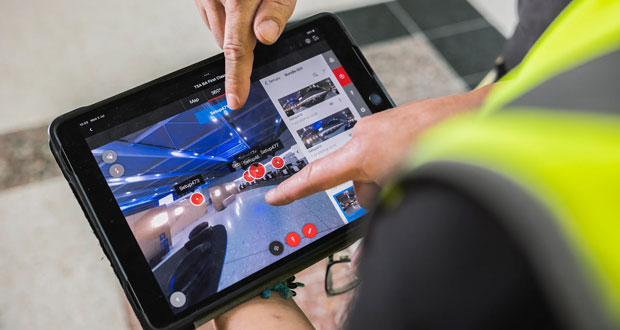 By David Cooke, Founder at Building Design & Management (BDM)
By David Cooke, Founder at Building Design & Management (BDM)
With the introduction of the Terrorism (Protection of Premises) Act 2025, more commonly referred to as Martyn’s Law – and its receipt of Royal Assent on 3 April 2025, venues across the United Kingdom are now faced with a significant new legal responsibility. This legislation mandates that organisations take proportionate and preventative measures to safeguard the public from the risk of terrorist attacks.
At the heart of this new legal framework is the introduction of a statutory Protect Duty, which imposes clear expectations on venue operators and duty holders to embed counter-terrorism preparedness into their everyday operations. This duty is far-reaching and will apply across a diverse and expansive range of premises, including, but not limited to: commercial properties, hospitality venues, entertainment spaces, transport infrastructure, healthcare facilities, educational establishments, and government-owned buildings.
Martyn’s Law marks a fundamental shift in the national approach to public protection, aiming to create safer environments by ensuring that security considerations are no longer optional, but an integral part of operational planning and risk management.
The new law introduces a tiered system based on venue capacity, put simply:
- Standard Duty (200–799 people): requires basic public protection procedures.
- Enhanced Duty (800+ people): involves more robust security measures.
While both tiers under Martyn’s Law include the requirement for robust response plans, the legislation goes further by mandating that venues implement comprehensive procedures that outline exactly how to respond in the event of a terrorist attack. Equally important are the preventative measures, which are designed to proactively reduce the likelihood of an attack occurring in the first place. Together, these elements aim to foster a culture of preparedness, resilience, and vigilance within public-facing organisations.
Although formal enforcement of the legislation is not expected to commence for at least two years, this should not be seen as a grace period for inaction. On the contrary, it represents a critical opportunity for venues and duty holders to take initiative, assess vulnerabilities, and begin implementing the required safeguards now. Failure to act within this preparatory window could expose organisations to substantial penalties – including fines of up to £18 million or five per cent of global turnover, whichever is greater, for serious breaches of the statutory duty.
Action Plan for Venues
Next 3 – 6 months: Lay the groundwork:
- Understand your tier: Begin by determining whether your venue is classified under the Standard Duty or the Enhanced Duty as outlined in Martyn’s Law. This classification will significantly influence the specific legal obligations your organisation must fulfil. Standard Duty typically applies to smaller premises, while Enhanced Duty targets larger venues with higher footfall. It is equally important to identify and document who holds legal responsibility for the premises, whether that be the venue owner, operator, or leaseholder – as this individual or entity will be accountable for compliance.
- Conduct risk assessments: Carry out comprehensive risk assessments tailored to your venue’s unique context. This includes evaluating potential threats such as the likelihood of a terrorist attack, identifying vulnerabilities in the physical layout, and assessing other variables such as event type, audience profile, crowd density, access points, and proximity to high-risk areas. The goal is to gain a clear understanding of where your defences may be weakest and to use that insight to implement meaningful, proportionate security improvements.
- Develop emergency plans: Create clear, well-documented emergency response plans that address a range of scenarios, including evacuation, lockdown, and medical response. These plans should define specific roles and responsibilities for staff, detail internal and external communication protocols, and ensure that all emergency exits, safe zones, and routes are clearly marked, unobstructed, and accessible to everyone – importantly, including those with disabilities. Regular training and drills should be scheduled to ensure all staff are familiar with their roles in an emergency situation.
6 – 12 months: Build your internal knowledge and capability:
- Train your teams: Ensure that all staff members receive comprehensive and ongoing training focused on emergency response procedures specific to your venue. This training should equip employees with the skills and confidence to act quickly and effectively in the event of an incident. Staff should also be trained to recognise and report suspicious behaviour or activities, which can be a critical factor in preventing potential threats. Regular drills and simulated exercises must be conducted to reinforce learning, test preparedness, and identify any gaps in response plans. These practical sessions help build teamwork, improve communication, and ensure that everyone knows their roles and responsibilities under pressure.
Over the next two years: Full implementation
- Enhance physical security
Standard Tier: Focus on securing all entry and exit points to control access effectively, preventing unauthorised individuals from entering the premises. Additionally, establish clearly marked and easily accessible safe zones within the venue where occupants can gather securely in the event of an emergency. These zones should accommodate people with varying mobility needs and provide protection until help arrives.
Enhanced Tier: Implement more comprehensive physical security measures suitable for higher-risk or higher-capacity venues. This includes installing CCTV surveillance systems to monitor activity in real-time and support incident investigations. Introduce mandatory bag checks at entrances to detect prohibited items, and establish protocols for monitoring vehicle access to prevent unauthorized or suspicious vehicles from approaching sensitive areas.
- Engage with experts: Collaborate with professional security consultants and counterterrorism specialists where possible, who bring valuable expertise and insight. These experts can help you assess your current security posture, identify vulnerabilities, and recommend tailored strategies to improve your venue’s protection. Their guidance will also be instrumental in ensuring that your security measures comply with the evolving requirements of Martyn’s Law and other relevant legislation.
- Register with the SIA: It is essential to notify and register with the Security Industry Authority (SIA) as part of your compliance process. Maintain accurate and up-to-date records of all security personnel, including licenses and training certifications. Keep thorough documentation of security policies, incident reports, and risk assessments, as these may be subject to review during audits or inspections.
- Stay up to date: Security threats and legal requirements evolve constantly. Regularly monitor for updates to legislation, guidance, and best practices related to counterterrorism and venue security. Subscribe to official government channels, industry bodies, and trusted information sources to ensure your venue’s policies and procedures remain current and effective in addressing emerging risks.
Challenges Ahead
For smaller venues, the introduction of Martyn’s Law may present a considerable financial and operational challenge. The costs associated with implementing physical security upgrades such as surveillance systems, controlled access points, and safe zones, can place pressure on already limited budgets. Additionally, the need for continuous staff training, regular emergency drills, and time dedicated to conducting comprehensive risk assessments may disrupt daily operations and divert resources from core business activities. There is also a potential impact on the customer experience, particularly if visible security measures create delays or alter the welcoming atmosphere many smaller venues strive to maintain.
Striking the right balance between robust security measures and maintaining public accessibility will be a delicate and ongoing task. Ensuring that venues remain open, inclusive, and user-friendly while still being equipped to respond to credible threats is a tightrope act, and one that requires thoughtful planning and a clear understanding of legal expectations.
Given the complexity and potential consequences of non-compliance, clarity on legal obligations and their practical implementation is essential. Many smaller operators may benefit from seeking professional guidance, such as engaging with security consultants or legal advisors, to avoid costly missteps or gaps in compliance that could lead to enforcement action.
Ultimately, the stakes are extraordinarily high. Not just in terms of potential fines or reputational damage, but in the far more critical objective of protecting lives. The effort invested now in preparation and compliance may prove invaluable in the face of a threat.
Procrastination is dangerous
At BDM we specialise in creating digital twins of physical spaces that mirror reality with unmatched detail and future-proof these environments against upcoming developments. Having worked across high-profile environments such as Heathrow Airport and the London Underground, we understand that public safety must be baked into every design and operational decision. The use of professionals in their fields early on will ensure venues are prepared, compliant, and resilient.
Martyn’s Law represents a major shift in venue security, and the clock is ticking. Now is the time to act: procrastination is dangerous.





